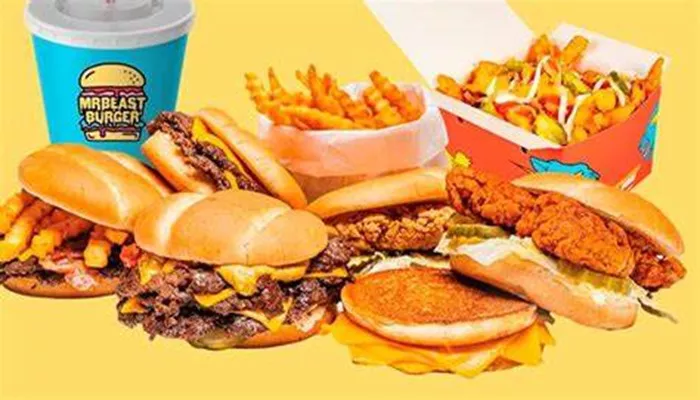Burger King introduced the Ch’King sandwich in June 2021, aiming to capture a share of the booming fast-food chicken sandwich market. Despite initial enthusiasm and positive reviews, the Ch’King was discontinued less than a year later. This article explores the reasons behind Burger King’s decision to stop launching the Ch’King, focusing on operational challenges, sales performance, and customer feedback.
The Rise And Fall of The Ch’King
The Ch’King was Burger King’s response to the “chicken sandwich wars” that began in 2019, sparked by Popeyes‘ wildly successful chicken sandwich. Burger King aimed to differentiate itself by offering a hand-breaded chicken filet on a potato bun with pickles and a signature sauce. The sandwich was available in both regular and spicy versions, and it garnered praise from customers and food critics alike for its flavor and quality.
Why Did Burger King Discontinue The Ch King
However, despite the initial success, the Ch’King faced significant challenges that ultimately led to its discontinuation in early 2022. Here are the primary reasons for this decision:
1. Operational Difficulties
One of the most significant issues with the Ch’King was its complexity in preparation. The sandwich required a labor-intensive process that involved hand-breading each chicken filet. This method not only increased the time needed to prepare orders but also placed additional strain on kitchen staff, many of whom were already dealing with high-pressure environments typical of fast-food restaurants.
Employees reported that making the Ch’King was cumbersome and often led to operational bottlenecks. This complexity resulted in longer wait times for customers and increased frustration among staff, which ultimately affected service quality.
2. Sales Performance
Despite initial excitement surrounding the Ch’King, sales did not meet expectations. Reports indicated that while some customers loved the sandwich, it failed to generate sufficient sales volume to justify its continued presence on the menu.
The financial performance of the Ch’King was disappointing for Burger King, particularly as the brand was looking for new items to boost its overall sales during a challenging period.
SEE ALSO: What Sandwiches Are 2 for 5 at Burger King
3. Quality Control Issues
The hand-breading process, while intended to enhance quality, also led to inconsistencies in product preparation. Some locations struggled with maintaining food safety standards due to the increased handling of raw chicken. There were concerns about food safety protocols not being followed properly, which raised alarms about potential health risks associated with consuming improperly prepared chicken sandwiches.
4. Market Competition
The fast-food landscape is highly competitive, especially in the chicken sandwich segment. With major players like Popeyes and Chick-fil-A dominating market share, Burger King needed a product that could consistently compete at a high level.
While some customers praised the Ch’King as one of the best fast-food chicken sandwiches available, it did not achieve widespread popularity or loyalty compared to its competitors, which further contributed to its decline.
5. Brand Perception
Burger King’s brand reputation has been challenged over the years due to perceptions of lower quality compared to other fast-food chains. The introduction of a premium product like the Ch’King aimed to elevate this perception; however, it ultimately fell short in changing consumer attitudes significantly enough to drive sustained sales growth.
Conclusion
In summary, Burger King’s decision to discontinue the Ch’King was influenced by several interrelated factors: operational difficulties that complicated service delivery, disappointing sales performance that did not meet corporate expectations, quality control issues that raised health concerns, fierce competition from established brands, and an ongoing struggle with brand perception.
Ultimately, Burger King replaced the Ch’King with a new line of Royal Crispy Chicken Sandwiches in 2022. These sandwiches are designed to be simpler to prepare while still appealing to customers looking for quality chicken options at fast-food restaurants. The experience with the Ch’King serves as a reminder of how challenging it can be for fast-food chains to innovate successfully within a crowded market landscape.
FAQs
Challenges with the Production of the Ch’King
Burger King faced several specific challenges during the production of the Ch’King sandwich. One major issue was supply chain disruptions, which affected the availability of key ingredients, particularly the chicken itself. Additionally, the company struggled with operational difficulties in getting franchise locations to consistently prepare the sandwich to the desired quality and specifications. Training staff to handle the new cooking processes and ensuring uniformity across locations also proved to be a hurdle.
Furthermore, the sandwich’s initial marketing campaign put pressure on operations to meet high consumer expectations, leading to execution challenges in busy restaurants.
Impact of Discontinuation on Overall Sales
The discontinuation of the Ch’King had a noticeable impact on Burger King’s overall sales. Initially, the sandwich generated significant buzz and attracted new customers, contributing to a temporary boost in sales. However, once it was removed from the menu, the brand faced a dip in traffic as customers who had tried and enjoyed the Ch’King looked elsewhere for their chicken sandwich fix.
The loss of a competitive offering in the increasingly crowded chicken sandwich market may have hindered Burger King’s ability to retain customers and compete with rivals like Popeyes and Chick-fil-A, ultimately affecting overall sales and brand perception.
Main Criticisms from Employees and Customers
Critics of the Ch’King included both employees and customers, who voiced a range of concerns. Employees often highlighted the complexity of preparing the sandwich, which required additional training and time during busy hours. This sometimes led to frustration and longer wait times for customers. On the customer side, feedback indicated that the sandwich didn’t live up to the marketing hype; some felt it was inconsistent in quality and flavor across different locations.
There were also complaints about its price point compared to similar offerings, with some customers perceiving it as not worth the cost. Overall, the sandwich faced challenges in meeting the high expectations set by its launch campaign.

